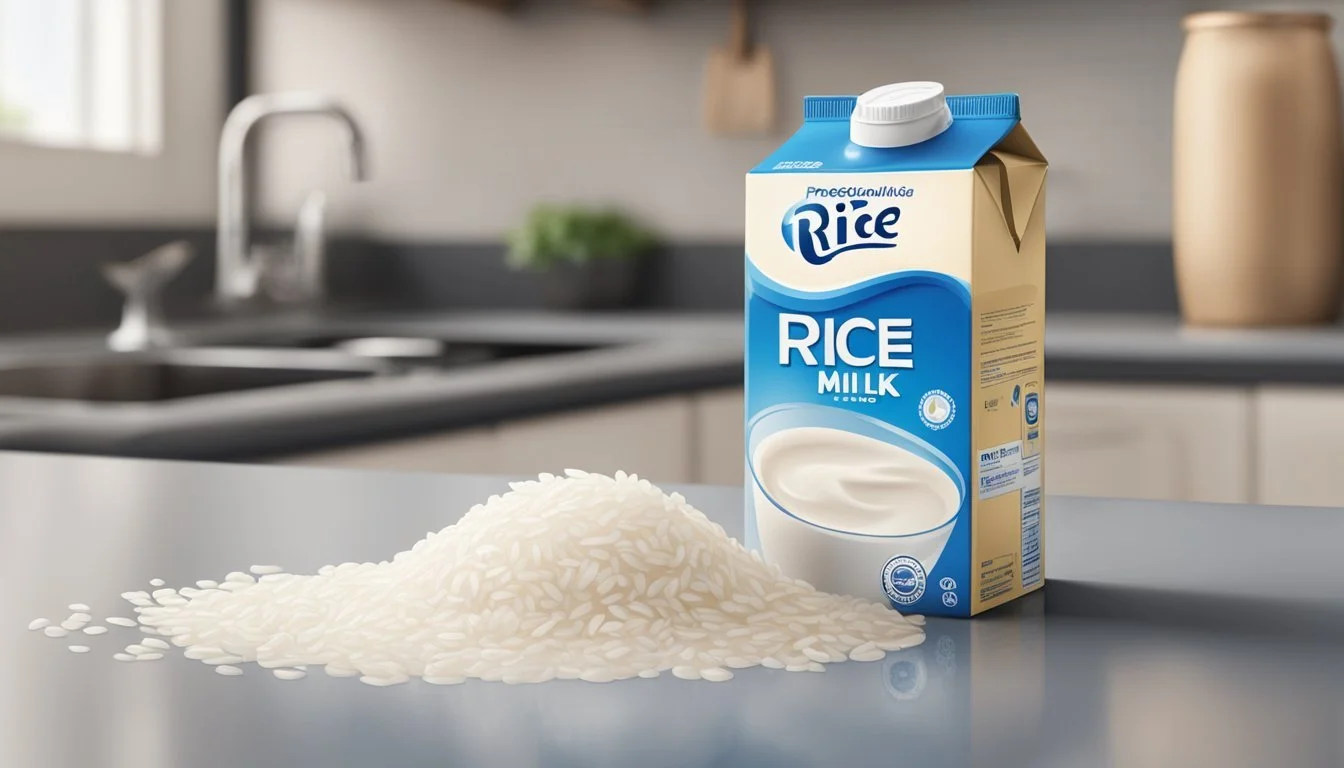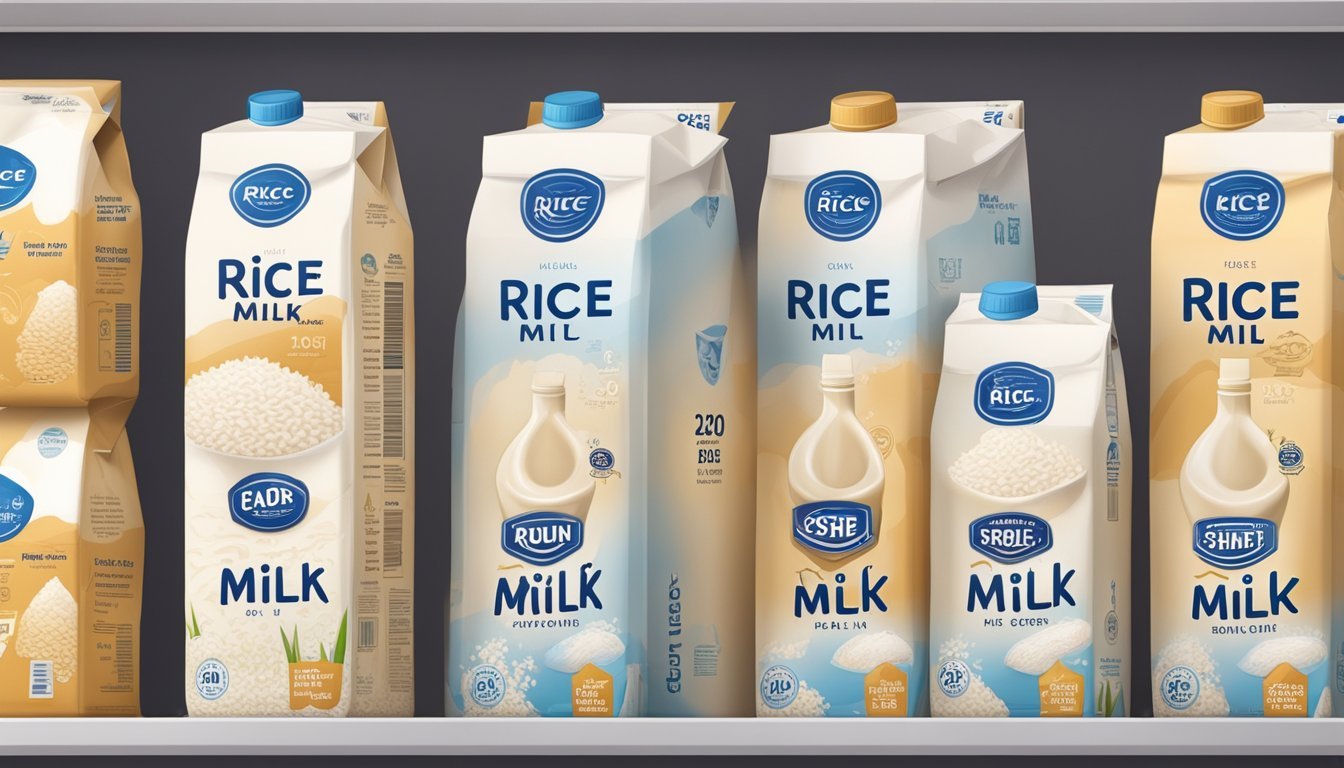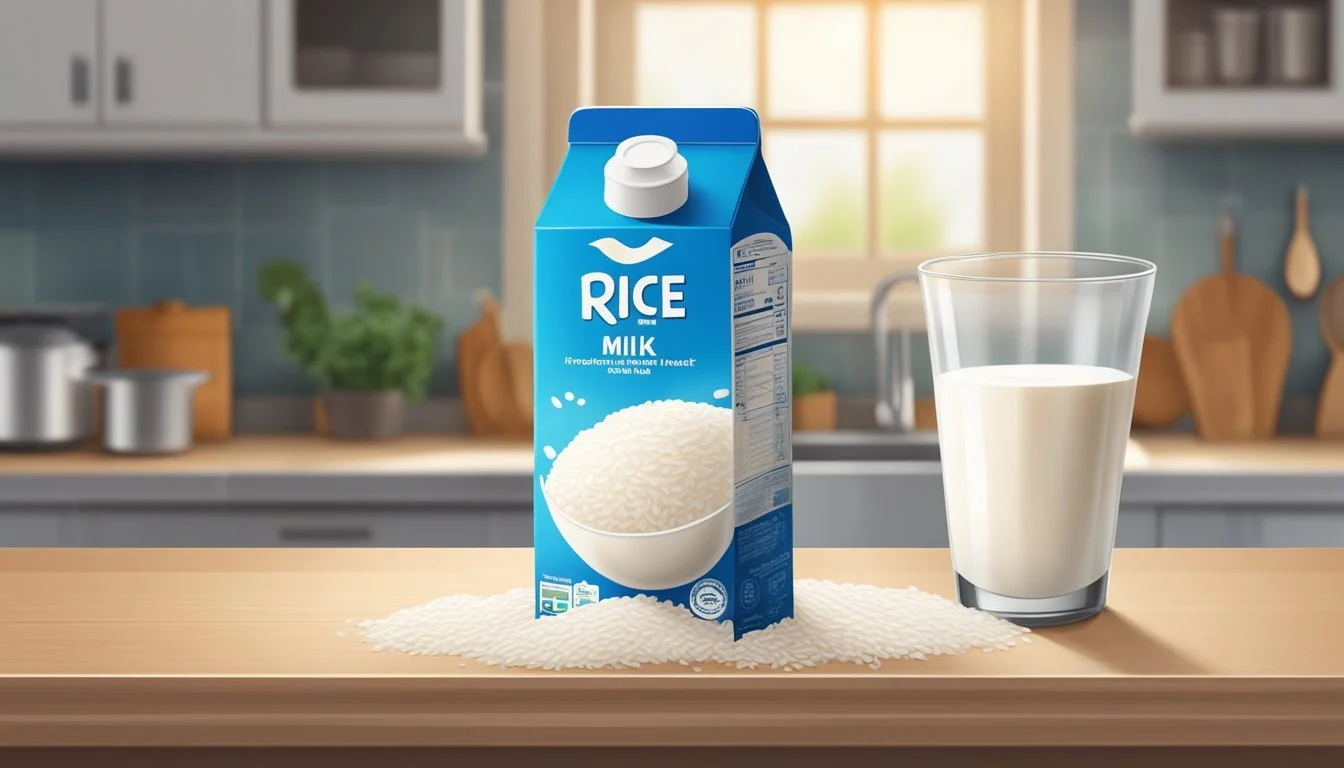Does Rice Milk Go Bad?
Shelf Life and Storage Tips
Rice milk, a popular plant-based alternative to cow's milk, does indeed have an expiration period that consumers should be aware of. Shelf-stable rice milk can last up to a month past its "best by" date if unopened, making it convenient for those who do not regularly use it. Once opened, it should be used within seven to ten days to ensure safety and quality.
Refrigerated rice milk, often found in the dairy section, has a shorter window of freshness. It is recommended to consume it within seven to ten days after purchase. Signs that rice milk has gone bad include a sour or rancid odor, changes in texture, or visible mold.
Understanding how to identify spoiled rice milk can prevent unpleasant experiences and potential health issues. Consumers should check for bloated packaging, unusual smells, and texture changes. Keeping rice milk properly stored and monitoring its condition will help maintain its quality and safety.
Understanding Rice Milk
Rice milk is a popular dairy-free alternative made from milled rice and water. It is often favored by those with lactose intolerance or who follow a vegan diet due to its allergen-friendly composition.
Composition and Nutrients
Rice milk consists primarily of milled rice and water, and sometimes includes sweeteners and flavorings for taste. This milk alternative is naturally gluten-free and suitable for those with soy or nut allergies. Most commercial rice milks are fortified with calcium, vitamin D, and sometimes vitamin B12 to enhance their nutritional profile.
While rice milk is low in calories and fat, it is also low in protein, typically offering only 1 gram per cup. This makes it less ideal for those seeking high-protein options. Additionally, rice milk generally contains about 130 calories per serving, but these values can vary by brand and added ingredients.
Comparison to Other Milk Alternatives
Compared to other milk alternatives, rice milk has a distinct advantage for those with multiple allergies. It is one of the few options that is both soy-free and gluten-free, making it suitable for a broader range of dietary needs.
While soy milk offers higher protein content and almond milk has fewer calories, rice milk is easier on sensitive stomachs and less likely to cause allergic reactions. Coconut milk and oat milk offer richer and creamier textures, but rice milk remains a light and versatile option. Although it lacks the creaminess of dairy milk, it serves well in cereals, smoothies, and baking recipes, providing a mild, neutral flavor.
Shelf Life and Expiration
Rice milk's shelf life and expiration depend on various factors, including whether it is shelf-stable or refrigerated. Understanding these aspects can help ensure the rice milk remains safe and enjoyable to consume.
General Shelf Life of Rice Milk
Shelf-Stable Rice Milk: Shelf-stable rice milk can be stored at room temperature until opened. Unopened, it generally lasts until the expiration date printed on the packaging, which can be several months. Once opened, it should be refrigerated and consumed within 7-10 days to maintain freshness.
Refrigerated Rice Milk: Rice milk found in the refrigerated section of stores should always be kept chilled. Unopened, it typically lasts until the expiration date. After opening, it also needs to be consumed within 7-10 days. Proper refrigeration is crucial to preventing spoilage.
Indicators of Expired Rice Milk
Color: Fresh rice milk has a consistent, creamy-white color. If it turns off-white or yellowish, it may be spoiled.
Smell: A sour or rancid odor is a strong sign that rice milk has gone bad. Fresh rice milk usually smells mild and slightly sweet.
Texture: Expired rice milk may develop clumps or a gritty texture, indicating spoilage. When poured, it should be smooth and uniform.
Mold: Visible mold inside the container or on the surface of the rice milk warrants immediate disposal. Even small amounts of mold indicate contamination.
Taste of Rice Milk: A spoiled rice milk tastes sour instead of its usual mild sweetness. If the taste is off, it should not be consumed.
Checking these indicators regularly can help avoid consuming spoiled rice milk. Consuming it past its optimal freshness period can lead to unpleasant flavors and potential health risks.
Storage Practices
Proper storage of rice milk is essential to maintain its freshness and extend its shelf life. These practices ensure that the milk remains safe and flavorful for consumption.
Proper Rice Milk Storage
Rice milk should be stored in specific ways depending on whether the carton is opened or unopened. Unopened shelf-stable rice milk can be stored at room temperature in a cool, dry place like a pantry. This keeps the milk away from heat and light, which can affect its quality.
Opened rice milk must be refrigerated. It's best to store it in the main compartment of the refrigerator, not the door, since temperatures fluctuate more there. Use an airtight container to prevent contamination and absorption of other odors.
Extending Shelf Life
To maximize the shelf life of rice milk, consider freezing it. Pour the rice milk into a freezer-safe airtight container or freezer bags, leaving space at the top for expansion. Label the container with the date of freezing.
Frozen rice milk can last 3 to 6 months. When ready to use, thaw the milk in the refrigerator to maintain its quality. Always check for signs of spoilage, such as a sour smell or unusual texture, before consuming previously frozen rice milk.
Signs of Spoilage
Properly identifying when rice milk has spoiled can prevent health risks and ensure a pleasant consumption experience. Notable signs include visual and textural changes, olfactory and flavor indicators, as well as potential health risks from consuming spoiled rice milk.
Visual and Textural Changes
Visual and textural changes are often the first indicators that rice milk has gone bad. Spoiled rice milk may exhibit changes in color, becoming darker or developing an off-white hue.
Consistency changes are also common. The milk may become more watery, or conversely, it could develop lumps or clumps, indicating separation or curdling. Seeing any changes in the smoothness or uniformity can be a strong sign of spoilage. Any noticeable layers separating in the rice milk container are also red flags.
Olfactory and Flavor Indicators
The smell and taste of rice milk can provide clear signs of spoilage. Fresh rice milk typically has a mild, neutral aroma. In contrast, spoiled rice milk often develops a foul odor, such as a sour or off-smell, which signals bacterial growth.
The taste of spoiled rice milk will also shift unpleasantly. Instead of a mild, slightly sweet flavor, it may taste sour, bitter, or have an off flavor that is unmistakable. If there is any doubt based on smell or taste, it is safer to discard the milk.
Health Implications of Consuming Spoiled Rice Milk
Consuming spoiled rice milk poses several health risks. Bacterial growth in the milk can lead to foodborne illnesses. Potential symptoms include vomiting, upset stomach, and diarrhea. These symptoms occur because harmful bacteria can proliferate in spoiled milk, posing significant risks.
To ensure safety, it is essential to discard any rice milk that shows signs of spoilage. Regularly checking the milk for changes in smell, taste, and texture can prevent adverse health effects and maintain a safe consumption practice.
Specific Considerations
Different factors affect the shelf life and quality of rice milk, including whether it's opened or unopened and whether it’s homemade.
Opened vs Unopened Rice Milk
For unopened rice milk, proper storage is crucial. Shelf-stable varieties can be kept in a cool, dry place away from light and heat until the expiration date. Preservatives often help lengthen this shelf life. Once opened, rice milk must be refrigerated. Typically, it should be consumed within 7 to 10 days. Signs of spoilage include sour smell, unusual texture, or mold growth. Exposure to air will hasten spoilage, so use airtight containers.
Homemade Rice Milk
Homemade rice milk lacks preservatives found in commercial versions. This means it has a much shorter shelf life. Refrigerate it immediately after preparation and consume within 3 to 5 days. Leave some space in containers if freezing to allow for expansion. Proper sterilization of utensils and containers helps maintain freshness. Airtight containers are recommended to reduce exposure to air and maintain quality.
Utilizing Rice Milk
Rice milk finds several uses in various culinary applications and can be stored using a number of alternative techniques to ensure its freshness and usability.
Culinary Uses
Rice milk serves as an excellent alternative to dairy milk in various recipes. It can be used in smoothies, providing a light and mildly sweet base. When pouring it over cereal, it blends well with different grains and fruits.
In baking, rice milk substitutes well for cow's milk in cakes, muffins, and bread. Its neutral flavor allows it to blend seamlessly without overpowering the other ingredients. Rice pudding and other desserts like puddings benefit from the smooth texture rice milk offers, making them creamy and delectable.
For quick use, heating rice milk in a microwave can be convenient, especially when preparing warm beverages or foods. Whether in sweet or savory dishes, rice milk's versatility makes it a valuable ingredient in both the dairy section and non-dairy cooking spheres.
Alternative Storage Techniques
Proper storage techniques can significantly extend the life of rice milk. Once opened, it is essential to store rice milk in its package in the refrigerator. For extending its shelf life further, consider freezing it, although note that the texture might change slightly due to the separation of ingredients.
Freezing rice milk in an ice cube tray allows for easy portion control and reduces waste. This method is particularly useful for adding to smoothies or milk-based dishes in small amounts.
When storing in the freezer, leave some space in the container to allow for expansion as the liquid freezes. If any odd odors, textures, or mold growth is detected, it is best to throw it out to prevent any potential health risks. Proper packaging and mindful storage practices help maintain rice milk's freshness and quality.







